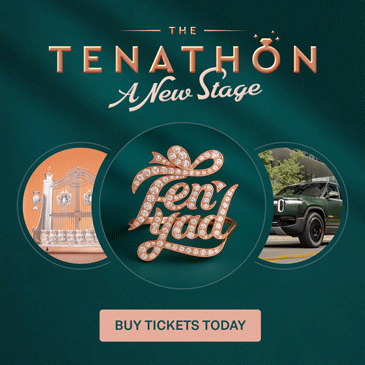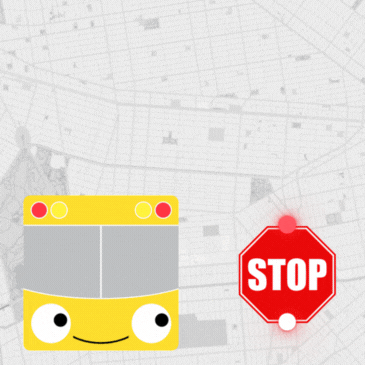The Rebbe says:
1. The Torah portion which we read on the day of Simchas Torah is Parshas Vezos Haberachah, the very last portion in the Torah.
2. The Rebbe now says that there must be a connection between Simchas Torah and the Parshah of Vezos Haberachah:
Parshas Vezos Haberachah and Simchas Torah
The essence of Torah is not logic and understanding, it is higher then that, it is Hashem’s essence! Therefore even the words of Torah being said by a young child connects to the same level which the greatest Talmudic scholar connects to. And this is why we dance with the Torah on Simchas Torah with its mantle on and do not learn it- because the essence of Torah is above all reason and comprehension, the essence of Torah is Hashem’s essence!
The Rebbe says:
1. The Torah portion which we read on the day of Simchas Torah is Parshas Vezos Haberachah, the very last portion in the Torah.
2. The Rebbe now says that there must be a connection between Simchas Torah and the Parshah of Vezos Haberachah:
Everything that happens in this world is by Divine Providence (Hashgachah Pratis), and especially with regards to the Torah, we know that everything is perfect and exact. Therefore, if we always read the portion of Vezos Haberachah on Simchas Torah they must have a connection. What is the connection?
3. The Rebbe now begins explaining the connection by discussing Vezos Haberachah:
The fourth verse of Parshas Vezos Haberachah says, “Torah Tziva Lanu Moshe Morasha Kehilas Yaacov – The Torah that Moses commanded us is the heritage of the congregation of Jacob”.
This verse simply means that Moshe Rabbeinu (Moses our teacher) accepted the Torah from Hashem on Mount Sinai, and gave it over to the Jewish people.
Now, our Sages tell us [1] that when Moshe Rabbeinu received the Torah he even received every single interpretation and new insight that would ever be explained by any Jew for all time, and this includes the Torah which Moshiach [2] will reveal to us. Therefore, when Moshe Rabbeinu gave us the Torah, he gave it to us in its absolute entirety.
However, there are different stages in how the Torah is revealed to us; there are parts of Torah which have already been revealed to us and there are parts of torah which have not been revealed yet. In other words, every single level and nuance of the Torah was already given to Moshe Rabbeinu on Mount Sinai, the only difference is when they are revealed.
The resulting consequence of the above explanation is that when we sit down and learn, however deep we think we have penetrated the Torah and whatever insights we think we just came up with, we must know that really this is apart of the Torah that Moshe Rabbeinu already received and really our understanding is only a drop in an endless sea. As the Torah itself testifies [3], “The measure thereof (of the Torah) is longer than the earth and broader than the sea”.
3. The Rebbe continues discussing this verse:
The Talmud tells us [4] that this verse (“Torah Tziva Lanu Moshe Morasha Kehilas Yaacov – The Torah that Moses commanded us is the heritage of the congregation of Jacob”)
is the first Torah concept which a father should teach his children when they begin to speak
4. The Rebbe asks a question on this:
Question: It doesn’t make sense to teach this verse to such young children because according to the abovementioned explanation of this verse we would be teaching them (or at least hinting at) a very deep aspect of the Torah- that Moshe Rabbeinu accepted the entire Torah on Mount Sinai and that any level of our understanding is only a drop in an endless sea, and isn’t the usual order of teaching to start with the easier concepts and then move on to the harder ones? How does this young child who just began to speak connect to such a deep portion of the Torah?
5. The Rebbe answers:
Answer: The essence (Etzem) of the Torah is higher then logic understanding; it is connected to the Soul of ever Jew. Therefore, the usual order of going from easier concepts and then moving on to harder ones does not apply here because the essence of Torah is not an idea of understanding, it is infinitely higher.
The Rebbe now explains what the essence of the Torah is:
The Zohar [5] tells us[6] that Hashem put His essence (Etzem) into the essence of the Torah, and therefore when a Jew learns Torah he is connecting to and “grabbing a hold of” Hashem’s essence.
Now that the Rebbe explained why we do not have to follow the usual order of “first teaching easier concepts and only then moving on to harder ones” (because the essence of Torah is higher then logic), the Rebbe can now explain how this verse is perfectly appropriate for the child:
By nature, a persons understanding of Torah cannot connect to the essence of Torah, no matter how smart he is, because he is finite and the essence of Torah is infinite. However, Hashem decided that when a person learns the Torah he will be connecting to the essence of Torah.
Now we can understand how our young children have a connection to the deep aspect which is hinted at in this verse:
Just like the mind of an adult cannot connect to the essence of Torah, and only because Hashem decided that when a person learns Torah he will be connecting to the essence of it, this also applies to a child; even though his mind cannot naturally connect to the essence of Torah, Hashem decided that through a child uttering the words of Torah he will connect to the essence of Torah!
And this brings us to the second part of the verse, “The heritage of the congregation of Jacob”:
The Halachah (law) regarding inheritance is [7] that there is no difference what situation the inheritor is in; as long as he is a child of the deceased he inherits, even a child that is one day old can inherit his fathers’ estate and fills the position of the deceased [8].
Therefore when our verse finishes off with, “The heritage of the congregation of Jacob”, it is telling us that Jews, which are the children of Hashem, can connect to Hashem’s essence through their inheritance- the Torah, (just like the law that the inheritor fills the position of the deceased). And this applies to the whole “congregation of Jacob”, to every single Jew without exception, because we are Hashem’s children and that’s it.
6. The Rebbe now questions the need for the child to know this at such a tender age:
Question: What’s left to be understood is why this verse must be taught to the child first? Granted, Hashem’s essence is even present in the utterances of the words of Torah of a child, but why does the child have to know this? What would be the harm in waiting till the child grows up and can understand this better anyways?
7. The Rebbe answers:
Answer: A Jew must be ingrained with the fact that the Torah is not just any wisdom, it is Hashem’s wisdom, and “He and His wisdom are one” [9], and therefore the essence of Torah is Hashem’s essence. And if (Heaven Forbid) a Jew does not have this recognition, he is missing the whole foundation of Torah.
Therefore, since this fact that the Torah and Hashem are one is not a separate detail in our learning of the Torah, but is a foundation to our Torah studies, we must first know this before diving into the sea of Torah, because obviously before we can build anything we must have our foundation.
The Rebbe now adds that if one was missing this foundation in the beginning it can even affect him later when he does find this out:
Not only would a person be missing the foundation of any Torah that he learnt before he knew that Hashem and his Torah are one and the essence of Torah transcends any level of understanding, even later when he will want to accept the fact that Torah is higher then understanding he will have a hard time doing this because till now Torah for him was only understanding and logic.
Now we can understand why we first teach a child the verse, “Torah Tziva Lanu Moshe Morasha Kehilas Yaacov – The Torah that Moses commanded us is the heritage of the congregation of Jacob”:
We want to engrain in them right away that Hashem and his Torah are one and the real essence of Torah is higher then logic and understanding.
8. Now that we know (a little) about Parshas Vezos Haberachah, the Rebbe discusses Simchas Torah:
It is a Jewish Minhag (custom) [10] to be happy with the Torah on Simchas Torah in a specific way; we take a Sefer Torah (Torah Scroll) which is wrapped up in its mantle and dance around the Bima (the podium on which the Torah is read) with it.
Question: Seemingly this doesn’t make any sense. If the whole idea of Torah is learning and understanding Hashem’s wisdom, (even in order to connect to the core of Torah we must learn, as we explained before), the happiness we get from the Torah on Simchas Torah should be through everybody learning it in great amounts and with more vigor! Why instead do we (not use our brains but) dance with our feet with the Torah closed up so that we can’t even look inside and read it?
Answer: As we said before, the true depth of Torah is not its logic and wisdom but its holiness, (and therefore even an unlearned man makes a Blessing on the Torah and must be happy on Simchas Torah). The reason we do learn the Torah and try to understand its great wisdom is so that we should internalize it into every part of our lives [11], because if we would not learn the Torah and delve into its logic, the Torah would stay an aloof energy of Hashem.
Therefore we dance with the Torah closed up in its mantle so that we can’t read it; we are underscoring the point that Torah is higher then logic, and we are happy with the Torah not because of its great wisdom but because through the Torah we connect to Hashem’s Etzem (essence).
And this happiness comes out through our feet (dancing) because feet represent faith [12] (obviously your feet don’t question you when you need to use them to get somewhere) and our essence is expressed through our faith. Therefore, at a time when our essence is connecting to the essence of the Torah, to Hashem’s essence, it makes perfect sense to dance with our feet (which express our faith and essence).
9. The Rebbe now explains the connection between Simchas Torah and Parshas Vezos Haberachah:
On Simchas Torah we are embarking on a new journey of work for that upcoming year, therefore, we are like little children who need to be educated. How is a little child educated? Parshas Vezos Haberachah tells us, “Torah Tziva Lanu Moshe Morasha Kehilas Yaacov – The Torah that Moses commanded us is the heritage of the congregation of Jacob”; we must have simple faith and acceptance of Hashem, and this will affect our whole new year of learning to be with simple faith.
[Translators edition: 10. The Rebbe always said that Joy has the power to transcend barriers (“Simcha Poretz Geder”). When you dance with joy you break down walls and all forms of limits and constraints. So may it be Hashems will that through our amazing happiness and joy the boundary of galus (exile) be obliterated forever, NOW!!!].
Translated and adapted by Rabbi Shalom Goldberg. Taken from Likutei Sichos Volume 4.
—————————————–
[1] See Tractate Megillah, Page 19, side 2. See also Talmud Yerushalmi, Tractate Pe’ah, Chapter 2, Halachah 4. See also Shemos Rabbah, the beginning of Chapter 47. See also Vayikra Rabbah, the beginning of Chapter 22. See also Koheles Rabbah, Chapter 1, 9, and Chapter 5, 8. See also Shalos U’Teshuves Radach, Bayis Hey, Cheder Gimmel. See also Toras Haolah, Volume 3, Chapter 55. See also Hakdamos Hashach Al Hatorah. See also Or Torah of Harav Hamagid, beginning of Parshas Toldos. See also Iggeret HakodeshKunteres Acharon, entitled “Lehavin Peratay Halachos”.
[2] Lit. “anointed one”. The chosen one who will redeem us from exile.
[3] See Job, Chapter 11, Verse 9.
[4] See Tractate Sucah, Page 42, Side 1.
[5] The Zohar is widely considered the most important work of Kabbalah, Jewish mysticism. It is a mystical commentary on the Torah (the five books of Moses), written in medieval Aramaic and medieval Hebrew. It contains a mystical discussion of the nature of God, the origin and structure of the universe, the nature of souls, sin, redemption, good and evil, and related topics.
[6] See Zohar, Volume 2, Page 101, Side 2.
[7] See Nidah, Chapter 5, Mishnah 3.
[8] See Tractate Bava Basra, Page 65, Side 1. See also Tractate Zevachim, Page 4, Side 2. See also Shalos Uteshuvos Tzafnas Panayach Dvinsk edition, Volume 1, 118 and Warsaw edition, Volume 2, 118.
[9] See Rambam, Hilchos Yesodai Haotrah, Chapter 2, Halachah 10. See also Tanya, Volume 1, Chapter 2, and Volume 2, Chapter 7.
[10] And a Jewish custom is Law (see Tractate Menachos, Page 20, Side 2).
[11] And not only do we internalize the Torahs logic, we even internalize our connection to its essence (Etzem) which is higher then logic.
[12] See Likutei Torah, Devarim, Page 63, Paragraph 4.













